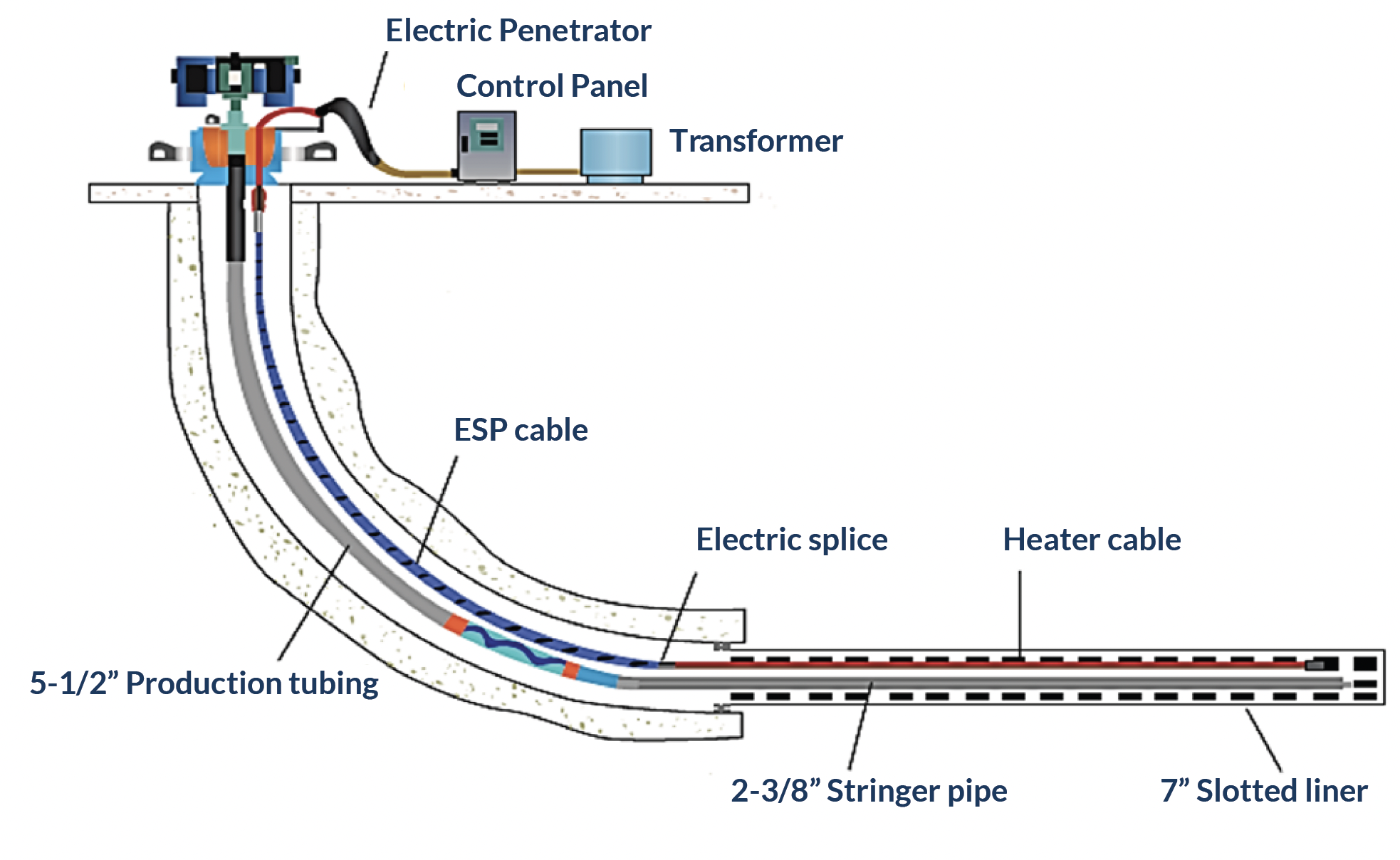
Electrical Heating is a thermal recovery method used as an Enhanced Hydrocarbon Recovery, which consists of provide heat into the formation without using injection fluids. This technique has been successfully applied in the adjacent radius to the sand / reservoir. The electrical heating method has different applications, such as: Ohmic Heating, Induction Heating and Resistive Heating (use of electrical resistors).
The use of electrical resistors through long cables with insulating material (MI) within the producing section of a well, has had an important effect in the heavy oil recovery. The principle of operation of these electric heaters is simple, direct and intuitive.
The heating power at the bottom of the well is transmitted through the electrical resistance conductors, which increases the temperature of the reservoir fluids, allowing the decrease in viscosity and therefore the increase in its mobility. Therefore, electric heaters have eliminated or mitigated, in some cases, the need to inject expensive diluents into heavy and extra-heavy oil wells.
Heating Cable Components (MI):
The heating element of the cable is an electrical conductor made of copper or copper-nickel alloy. The conductor heats up due to the passage of electric current through it, similar to what happens with the small filament inside a light bulb. The insulation material between the heating element and the stainless steel outer sheath is made of magnesium oxide (MgO), which is an excellent electrical insulator and a great heat transfer material.
MgO can reach high temperatures without compromising the electrical characteristics of the cable. The outer jacket of the heater cables is made of stainless steel and provides excellent protection against corrosion caused by aggressive downhole environments.
Great progress has recently been made in the manufacture of heating cables for Enhanced Oil Recovery. A new generation of high-power heaters can operate at high voltage (up to five kilovolts) and reach downhole temperatures of 650°C, delivering up to a thousand watts/meter of power. With these high temperature levels, in addition to viscosity reduction, other applications are being optimized, such as: In Situ Steam Generation, Cyclic / Continuous Steam Stimulation and SAGD with electrical preheating.
This new generation of cables are manufactured without external splices; and as a result, the outer diameter of the cable does not change along its length, despite having sections with different power densities. “MI-type heating cables can be easily used in non-thermal wells designed for cold production, in order to increase the recovery of heavy crude oil”.
To download the article, click here.


